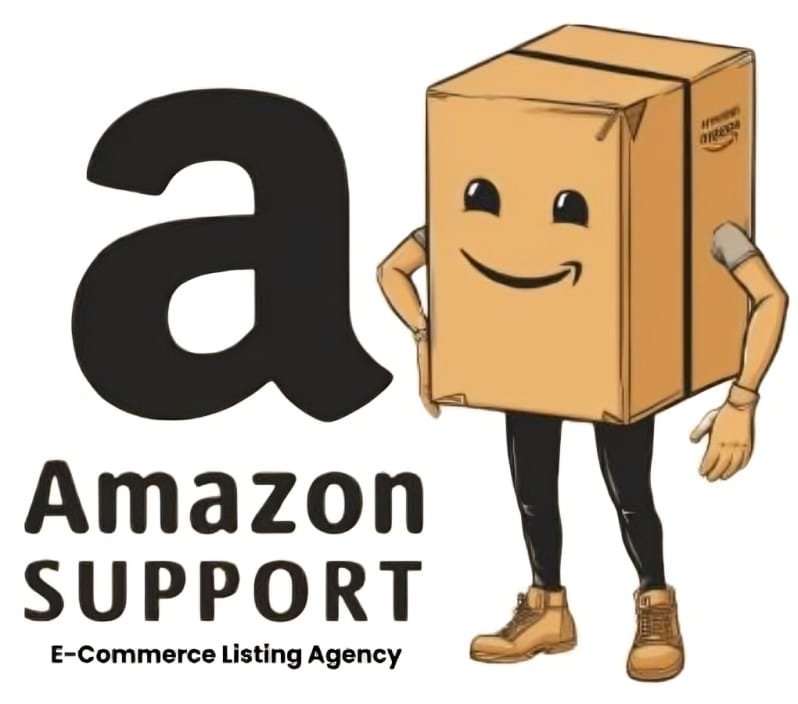If you’re new to the world of e-commerce and want to sell on Amazon, getting your products discovered by potential buyers can feel overwhelming. With millions of sellers competing for attention, the key to standing out lies in mastering Amazon SEO. Amazon SEO (Search Engine Optimization) ensures that your product listings are optimized to rank higher in search results, leading to more visibility and increased sales. In this blog, we’ll explore the essential steps to get started with Amazon SEO, and help you take the first steps toward success.
1. Understanding Amazon’s A9 Algorithm
Before diving into optimization, it’s important to understand Amazon’s A9 algorithm, which determines the visibility of your product in search results. Unlike search engines like Google, Amazon’s A9 algorithm focuses heavily on sales performance and user experience. The better your product sells, the higher it ranks. However, there are a number of factors that contribute to ranking, including keywords, listing quality, pricing, and customer feedback. Understanding this will guide your Amazon SEO efforts and help you optimize your listings for better results.
2. Keyword Research The Foundation of Amazon SEO
The cornerstone of Amazon SEO is effective keyword research. Keywords are the search terms shoppers use to find products like yours. When you sell on Amazon, including the right keywords in your product listings can significantly improve your chances of ranking higher. Here’s how to get started with keyword research:
- Use Amazon’s search bar: Start typing product-related terms into Amazon’s search bar. The autocomplete suggestions give you an idea of what people are searching for.
- Leverage keyword tools: Tools like Helium 10, Jungle Scout, and MerchantWords can provide valuable insights into popular search terms and competition levels.
- Analyze competitors: Look at top-selling products in your category to identify keywords they’re using in their titles, descriptions, and backend search terms.
Once you have your keywords, strategically incorporate them into your product titles, descriptions, and bullet points. But be careful not to overstuff your listings with keywords Amazon’s algorithm values natural, readable content that provides value to the customer.
3. Optimizing Product Titles For Amazon Seo
Your product title is one of the most important factors in Amazon SEO. It’s the first thing shoppers see in search results, and it plays a significant role in both search ranking and click-through rates. Here are some best practices for creating optimized product titles:
- Include primary keywords: Your main keyword should be included in the title, ideally near the beginning.
- Be descriptive: Use the title to clearly describe what the product is, including its key features (e.g., size, color, quantity).
- Follow Amazon’s guidelines: Keep your title clear, concise, and within Amazon’s character limits (usually 200 characters or less).
A well-optimized title not only helps improve your SEO but also attracts potential customers who know exactly what they’re getting.
4. Writing Compelling Product Descriptions And Bullet Points
Product descriptions and bullet points provide more detailed information about your product and its features. These are another important element of Amazon SEO because they allow you to naturally incorporate secondary keywords and give shoppers more reasons to buy your product. Here’s how to write effective descriptions and bullet points:
- Highlight benefits, not just features: While it’s important to list features, focus on how those features solve a problem or benefit the customer.
- Incorporate keywords naturally: Use secondary keywords throughout the product description and bullet points, but avoid keyword stuffing.
- Be clear and concise: Use bullet points to list the most important features, and reserve the product description for more detailed information.
By optimizing your descriptions and bullet points, you not only improve your chances of ranking higher in search results but also make your listings more attractive to potential buyers.
5. High-Quality Product Images And Amazon Seo
Images are one of the most critical aspects of an Amazon listing. In fact, high-quality images can influence both your click-through rate (CTR) and conversion rate, which directly impacts your SEO ranking. Amazon allows you to upload multiple images, so take advantage of this opportunity to showcase your product from different angles. Here are some tips for optimizing your product images:
- Use high-resolution images: Ensure your images are clear, crisp, and high-quality, with a minimum resolution of 1000px by 1000px for zoom functionality.
- Showcase your product’s key features: Use images to demonstrate the product’s features, scale, and how it’s used in real life.
- Follow Amazon’s guidelines: Ensure your images meet Amazon’s image requirements, such as having a white background for the main image.
The better your images, the more likely customers are to click on your listing and make a purchase, which will improve your rankings.
6. Encouraging Positive Customer Reviews
Customer reviews are a powerful ranking factor in Amazon SEO. Positive reviews not only help you build social proof but also improve your product’s visibility and trustworthiness. Here’s how to encourage reviews:
- Provide excellent customer service: Ensure your customers are satisfied with their purchases, as happy customers are more likely to leave positive reviews.
- Use the “Request a Review” button: Amazon provides a feature that allows you to send a review request directly to customers after they’ve received their product.
- Avoid incentivizing reviews: Amazon’s policies prohibit offering incentives in exchange for reviews. Instead, focus on delivering exceptional products and services to naturally earn good reviews.
The more positive reviews you accumulate, the better your chances of improving your rankings and driving more traffic to your product listings.
7. Price Competitively
Pricing is another important factor that influences both customer buying decisions and Amazon SEO. Amazon tends to favor products with competitive prices, so it’s important to research your competition and price your product accordingly. You can use tools like CamelCamelCamel or Keepa to track pricing trends and ensure your product is priced competitively.
When you sell on Amazon, getting your products discovered requires a combination of keyword research, listing optimization, quality images, and customer feedback. By following these steps and focusing on Amazon SEO from the start, you’ll increase your chances of ranking higher in search results, attracting more customers, and ultimately boosting your sales. With the right approach, your Amazon store can thrive and succeed in this competitive marketplace.




